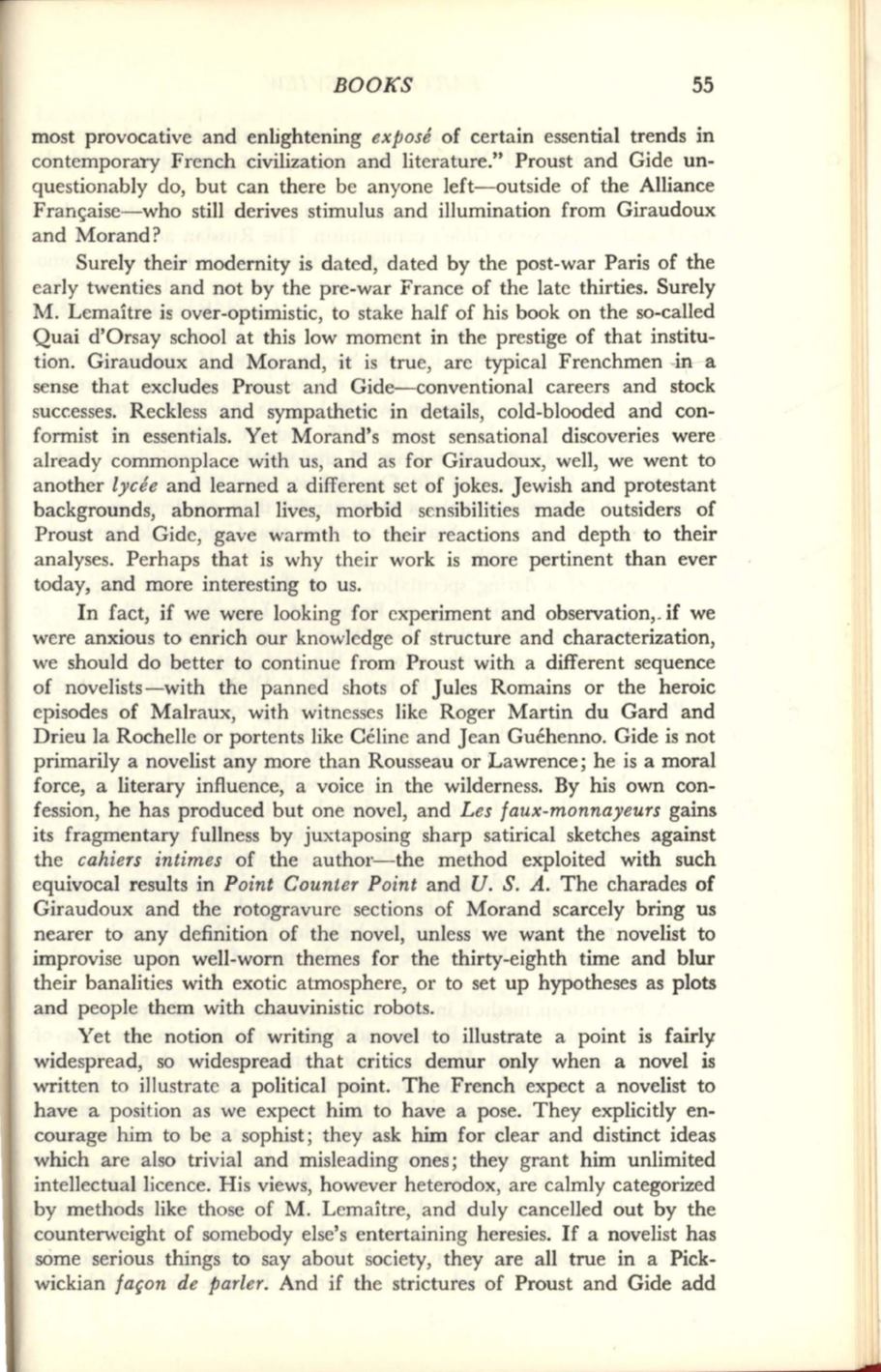
BOOKS
55
most provocative and enlightening
expose
of certain essential trends in
contemporary French civilization and literature." Proust and Gide un–
questionably do, but can there be anyone left-outside of the Alliance
Franc;aise-who still derives stimulus and illumination from Giraudoux
and Morand?
Surely their modernity is dated, dated by the post-war Paris of the
early twenties and not by the pre-war France of the late thirties. Surely
M. Lemaitre is over-optimistic, to stake half of his book on the so-called
Quai d'Orsay school at this low moment in the prestige of that institu–
tion. Giraudoux and Morand, it is true, are typical Frenchmen -in a
sense that excludes Proust and Gide-conventional careers and stock
successes. Reckless and sympathetic in details, cold-blooded and con–
formist in essentials. Yet Morand's most sensational discoveries were
already commonplace with us, and as for Giraudoux, well, we went to
another
lycee
and learned a different set of jokes. Jewish and protestant
backgrounds, abnormal lives, morbid sensibilities made outsiders of
Proust and Gide, gave warmth to their reactions and depth to their
analyses. Perhaps that is why their work is more pertinent than ever
today, and more interesting to us.
In fact, if we were looking for experiment and observation,_ if we
were anxious to enrich our knowledge of structure and characterization,
we should do better to continue from Proust with a different sequence
of novelists-with the panned shots of Jules Romains or the heroic
episodes of Malraux, with witnesses like Roger Martin du Gard and
Drieu la Rochelle or portents like Celine and Jean Guehenno. Gide is not
primarily a novelist any more than Rousseau or Lawrence; he is a moral
force, a literary influence, a voice in the wilderness. By his own con–
fession, he has produced but one novel, and
Les faux-monnayeurs
gains
its fragmentary fullness by juxtaposing sharp satirical sketches against
the
cahiers intimes
of the author-the method exploited with such
equivocal results in
Point Counter Point
and
U.
S.
A.
The charades of
Giraudoux and the rotogravure sections of Morand scarcely bring us
nearer to any definition of the novel, unless we want the novelist to
improvise upon well-worn themes for the thirty-eighth time and blur
their banalities with exotic atmosphere, or to set up hypotheses as plots
and people them with chauvinistic robots.
Yet the notion of writing a novel to illustrate a point is fairly
widespread, so widespread that critics demur only when a novel is
written to illustrate a political point. The French expect a novelist to
have a position as we expect him to have a pose. They explicitly en–
courage him to be a sophist; they ask him for clear and distinct ideas
which are also trivial and misleading ones; they grant him unlimited
intellectual licence. His views, however heterodox, are calmly categorized
by methods like those of M. Lemaitre, and duly cancelled out by the
counterweight of somebody else's entertaining heresies.
If
a novelist has
some serious things to say about society, they are all true in a Pick–
wickian
fafon de parler.
And if the strictures of Proust and Gide add


